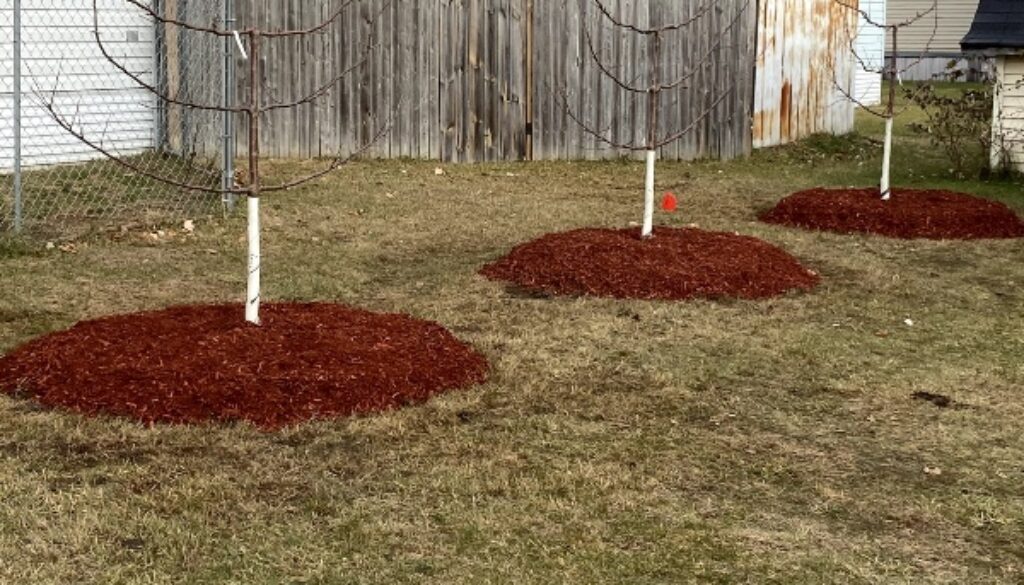Reduce your water usage while keeping your trees healthy
Reduce your water usage while keeping your trees healthy.
Reduce your water usage while keeping your tree healthy. One of the best methods of supporting the health of your mature trees and saplings while conserving water is to use mulch. Mulching isn’t difficult, and this protective ground covering not only saves water, but it can also control weeds, enrich your soil, and more.
With the steps outlined below, you’ll learn how to mulch trees, and how much mulch to use.
5 Ways Trees Benefit from Proper Mulching
First, let’s look at the big picture and the specific benefits mulch provides for your trees. Knowing how mulch works can help to focus your efforts and maximize the benefits.
1) Retain moisture in the soil
Mulching your trees provides an insulating blanket over the soil to reduce evaporation, retaining the precious moisture for the tree’s roots. This is especially important when you’re monitoring your water use.
Mulch also suppresses the growth of weeds and grasses, so the tree roots don’t have to compete with invasive plants for water. When the rains come, the mulch will then aid in preventing the loss of water via run-off and erosion.
2) Moderate soil temperature
With the correct amount of mulch, you can also moderate soil temperature fluctuations. During hot weather, mulches keep the ground from being exposed to the sun and heat, keeping the soil cool. This protects the top soil from drying out and hardening around the tree roots.
During cold weather, mulches help the soil retain warmth, reducing the chance of frost damage or root injury.
3) Improve soil health
When mulch decomposes, it provides structure, nutrients, and aeration for the soil. Provide Protection
When mulch is distributed properly, it also protects the roots, helps keep the trunk dry, and helps prevent soil compaction from foot traffic and lawnmowers.
5) Discourage weed and grass growth
As mentioned earlier, mulching discourages weed and grass growth. When weeds and grasses grow at the base of a tree, these uninvited plants steal not just the moisture from the soil, but also the nutrients that the tree needs.
Proper Mulching for Trees
Mulch to the drip line
When applying mulch, it’s important to know the scope of the area you are covering and how close to get to the trunk. Mulch should be kept away from the trunk and begin at the “root flare.” This is the area where the roots flare out, above ground, at the base of the tree.
The circumference of the mulch area should increase as the tree grows. Ideally, the mulch should extend as far as the tree’s canopy, also known as the “drip line.”
Avoid over mulching
The most common mulching mistake is over-mulching. Piling mulch over the root flare and up the trunk is not recommended. In addition, the depth of mulch should be between two and four inches, or less if the soil is poorly drained.
The ISA Certified Arborists at Johnson OpsTree Care are here to help
If your trees are displaying indications of concern please contact us at 608 526-6297




